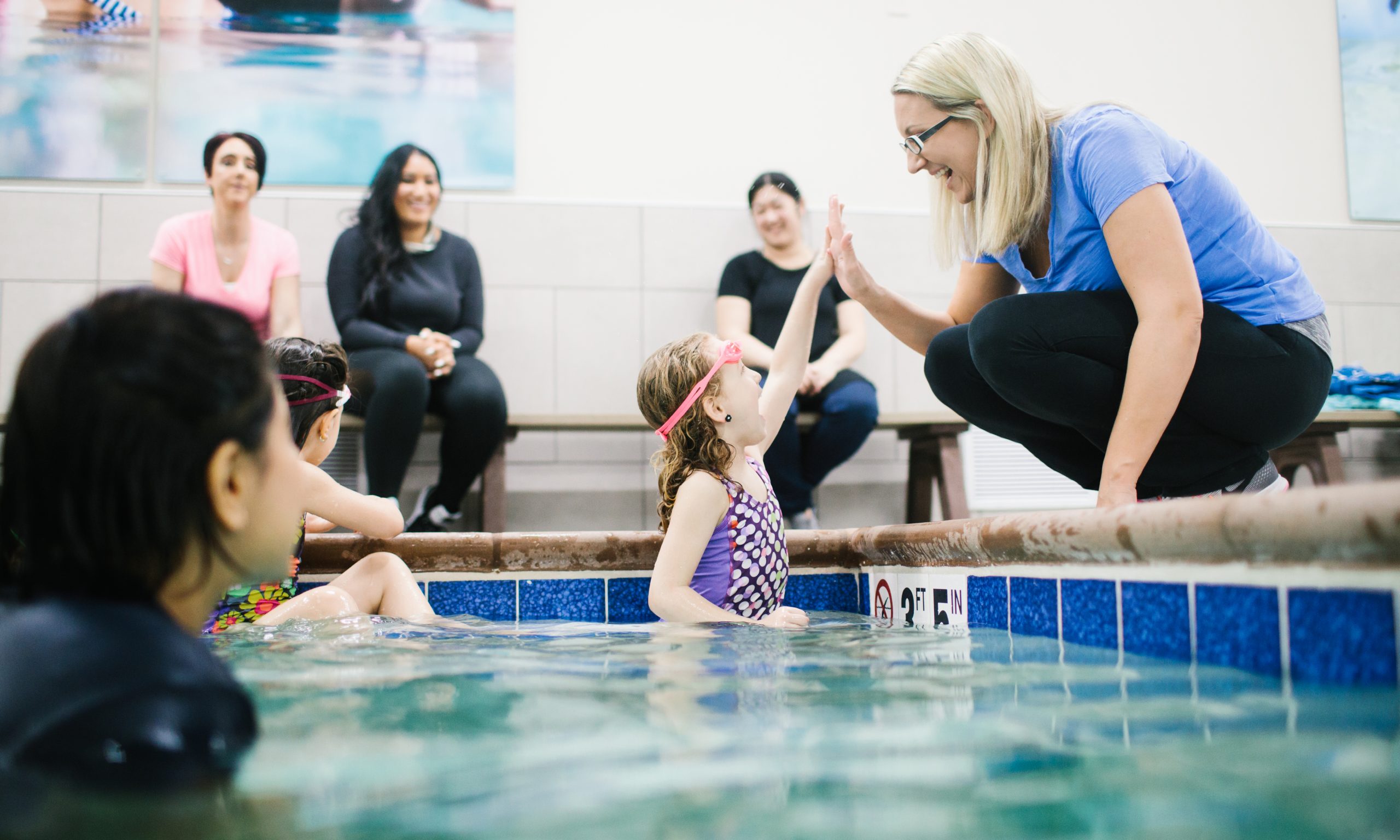Why is it so hot in the pool area? It’s one of the questions we hear often from parents and others sitting alongside our pools. The answer is somewhat more complicated than most people would expect, but the short answer is that the heat is necessary for us to deliver on two of our core promises: swimmer safety and creating a comfortable environment where kids are ready to learn.
While the warm air makes it feel very close in the pool area, the heat is not a sign of stagnant air. It’s exactly the opposite: Our pools are designed with industrial-strength air systems that constantly pump in fresh (and yes, warm) air while moving old air out. Our goal is to constantly refresh our pool areas. We have installed systems that can change out all the air in about 20 minutes, so that students, instructors and guests are literally enjoying a breath of fresh air when they walk in.
The case for clean air: Sweeping bonded chlorine away from swimmers
We blow air in to keep swimmers from breathing too many bonded chlorines – molecules of chlorine that have grabbed onto contaminants floating in the pool. Once bonded, these molecules rise from the water as a gas, leaving the pool cleaner as they float away. (All cleaned pools—even salt water pools—create bonded chlorine.) But that gas is smelly and unhealthy in large amounts, and nobody wants kids breathing it. What most people think of as the smell of chlorine is actually the smell of bonded chlorine. (Chlorine as it is used in a pool has a relatively light, clean smell.) Bonded chlorine is also heavier than air and would tend to build up at the pool surface where students are breathing (the lowest point in the pool area) without a constant stream of fresh air to blow it away.
FOSS designs the air system at its pools to push the fresh air in from the ceiling, directed down and across the pool surface so that the bonded chlorine is swept out via the air returns near the floor on the opposite side of the pool area – you can even feel the breeze if you stand in the right place.
The case for warm air: Students who are comfortable, safe and ready to learn
Cleanliness explains why we blow air in, but why do we heat it? Simply put, to create a good teaching environment. Kids learn best when they are comfortable. A shivering child is neither happy nor ready to learn. That’s why FOSS heats pools to 91 degrees and keeps the air warm so kids aren’t shivering when they’re out of the water.
In addition, there is a safety element to warm water and air. Kids lose body heat faster than adults, so warm water is about more than just making it enjoyable, it’s about keeping their bodies warm too.
Finally, there’s the fact that cool air meeting warm water (air that is more than 5 or 6 degrees cooler than the surface) leads to excessive evaporation – think of the steam rising from a hot tub. Instead of a warm pool deck, you’d have uncomfortably humid air and even condensation, which is bad for keeping things clean and sanitary.
Striking the right balance for clean air and water
Foss Swim School co-founder Jon Foss is obsessive about quality and has had a hand in the design of our air filtration systems over decades of pool-building. The end result, we believe, is the best possible learning environment for our swimmers.
In the case of the air, the right balance all flows from the science of warm, clean water. Keeping the air at a higher temperature isn’t just a choice; in the pursuit of cleanliness and comfort for the kids, it’s a necessity. So next time you’re at the pool, know that the warm air is a sign of the FOSS commitment to quality! Thanks for swimming and learning with us!
